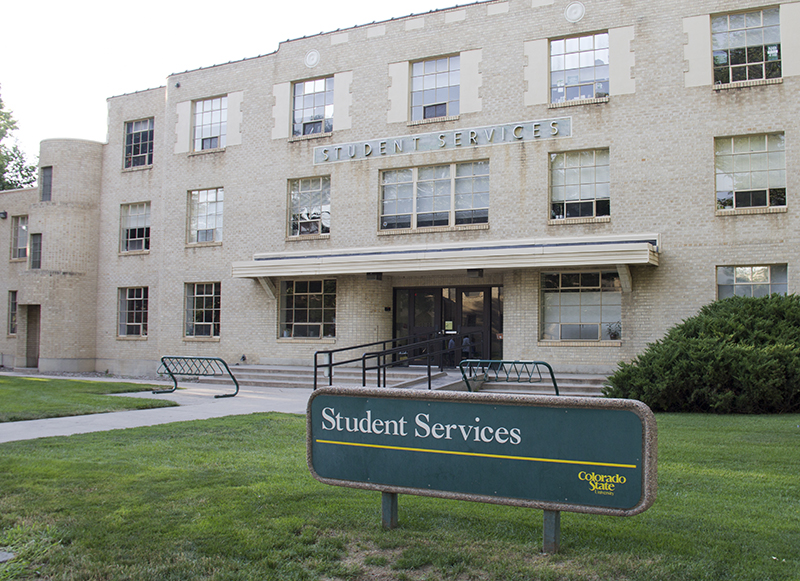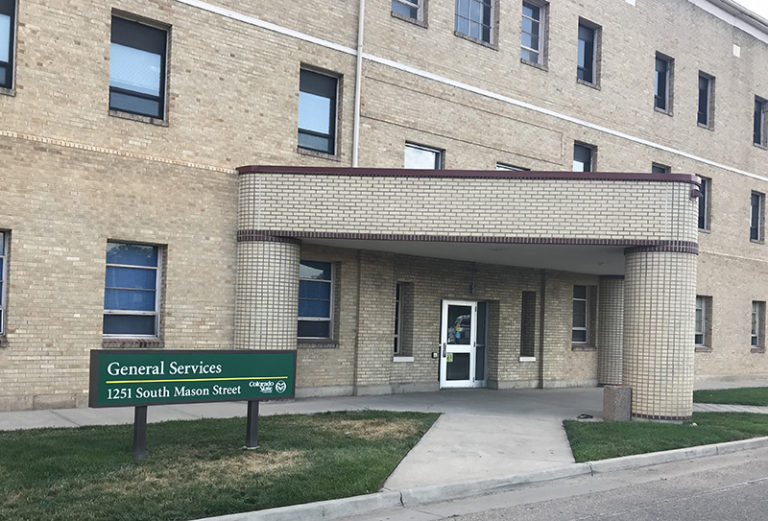In response to the requirements of Section 504, in the fall of 1977 the department of Student Relations became responsible for compliance with the university’s federal obligations regarding student needs. A 9-month coordinator was hired to manage the implementation and provision of auxiliary aids and academic adjustment required to provide equal access to qualified students with disabilities. At the same time, the first phase of the physical barrier removal was implemented on campus: creating curb cuts, ramps, and the installation of elevators and automatic door openers.
In the Fall of 1979, the various functions of the Student Relations office were decentralized into distinct departments. Resources for Disabled Students was established as one of these new departments, to be staffed by a director, a staff assistant for clerical support, and two work study students. The previous coordinator had left the institution as this transformation took place and a search was conducted for a new director who was hired in January of 1980. From the information available at the time, 178 students self-identified as having a disability.

RDS first shared office space/location with Women’s Programs (112 Student Services). The reception area was shared within the complex. Both directors had separate private offices and each program also had a room used by student staff and/or a separate library. In 1987, RDS hired a part-time, non-student hourly sign language interpreter who also provided administrative support when not in class interpreting.
In 1989, RDS moved to slightly larger sapce (116 Student Services), gaining a reception area as well as additional room for a growing student staff. Student-user activity also increased. Self-identified students with disabilities averaged 285 per semester and more students were requesting alternative testing as an accommodation. Although extra space was acquired with the move, due to space constraints, other space throughout the building was utilized for alternative testing, including empty offices as well as quiet hallways.
By Fall of 1994, self-identified students with disabilities had increased to 615. In response to the increasing student-user population, in 1990, a counselor position was added which also oversaw the responsibilities for Alternative Testing Services. A half-time position had also been created to respond to the needs of student-users using alternative (taped) text and at least two sign language interpreters had been hired (all non-student hourly). Student staff increased from five to approximately 10 to 13 per semester.
In 1995, RDS moved to a new location (100 General Services). With more than 200 students using Alternative Testing Services, the coordination of these services was no longer viable through the counselor position. Therefore, a ¾ time coordinator position was created in 1996. The coordinator of alternative text remained a part-time non-student hourly position.

The gains in moving were a larger reception area, private offices for the director, counselor, staff assistant, and for Interpreting Services as well as a room that provided work space for the coordinators of alternative text and alternative testing services. In addition, one room served as a general testing area and two additional smaller rooms located down the hall from the main office provided private testing space. Student staff increased to approximately 13 to 15 per semester to provide support for the implementation of services. The population of self-identified students with disabilities continued to average 600 per semester.
Approximately one year after the CSU flood of 1997, RDS also gained a separate testing area in conjunction with a remodeling project for the Learning Assistance Center. This provided a private office for the coordinator of alternative testing as well as an additional 4 rooms for individual student testing needs.
In Fall 1999, the (shared) part-time non-student hourly position of coordinator of interpreting services was converted to full-time, salaried position. This new position also helped to respond more effectively to specific demands created by two deaf students enrolled in the Veterinary Medicine program.
Due to the departure of the coordinator for alternative testing services in 2000 and in response to increased demands of student-users for alternative text services, both coordinator positions were converted to full-time salaried positions and a search for two coordinators was successfully conducted in 2001.
By 2002, the self-identified student population reached approximately 700. By 2008, the self-identified population of students with disabilities known by RDS ranged from 750 to 900, with one half to three-fourths receiving at least one unit of service per semester. Space changes and additions have included a remodeled area devoted to alternative text services (2005) and 4 testing rooms gained when the Learning Assistance Program moved (2007).
In 2009, the professional staff included the director, administrative assistant, two counselors, three coordinators of services and one staff interpreter. Approximately 20 students were employed as staff during the academic year and 10 to 12 free-lance sign language interpreters were cmployed for interpreting throughout the campus. The number of students who self-identify as having a disability was slightly over 1000.
By 2010, the number of students with disabilities had reached over 1300. Student staff had increased to 29. Soon thereafter, the title of the counselors changed to accommodations specialist and one more was added. As of 2017, the number of students who self-identify as, or who are suspected of, having a disability or chronic physical or mental health condition has reached well over 2300.

In the fall of 2018, the office underwent several changes. The name of the office was changed from Resources for Disabled Students, to the Student Disability Center. The office also moved to a new location in the TILT building. In addition due to an increase in student fees the office was given funding to hire two new positions, a full-time office manager/receptionist, and another assistant director to help support and oversee the accommodations specialists.
